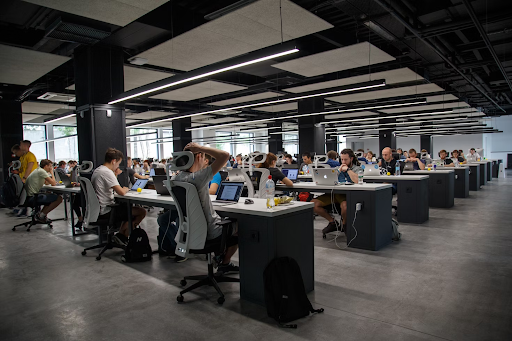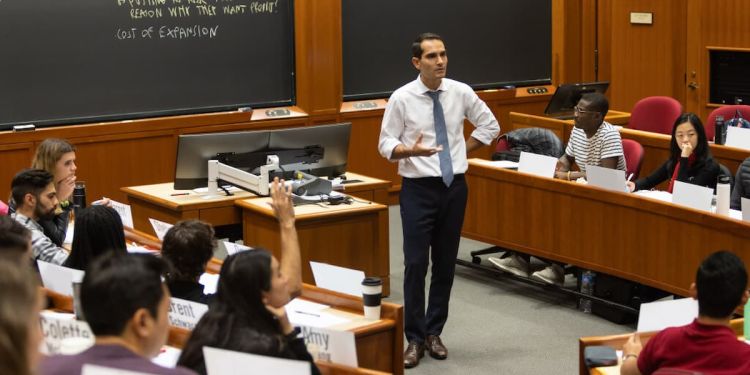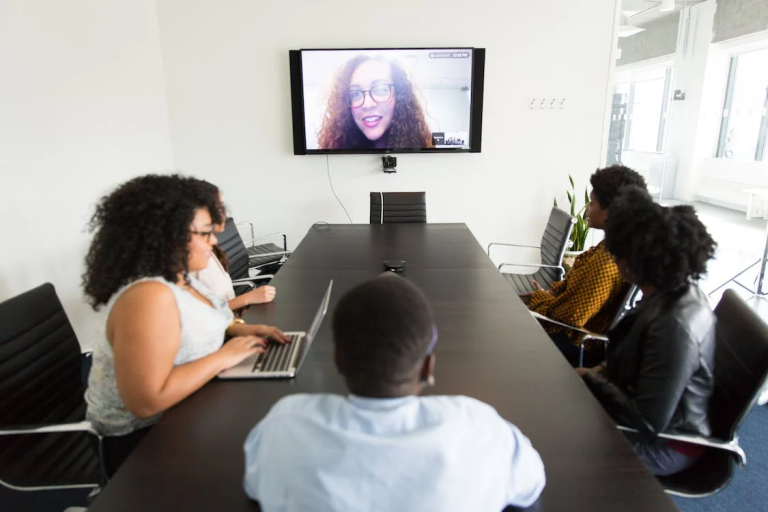Even though it has evolved significantly over the past few years, artificial intelligence still has a long way to go until it reaches its full potential in the HR department. Nonetheless, the right solutions (and implementation strategies) can be genuinely transformative and deliver an impressive ROI for organizations willing to put in the groundwork.
And even though it may not seem logical, AI is becoming prevalent in the business world.
For example, McKinsey’s 2024 survey discovered that 72% of organizations have adopted AI, while 65% regularly use generative AI — twice as many as in 2023.
But how does artificial intelligence come into play in managing a business team? Here’s everything you need to know about the benefits and challenges of leveraging AI to build a remote global workforce.
The Pros and Cons of Using AI to Build and Manage Global Remote Teams
With a growing number of available AI solutions, it’s no surprise that implementing them — in the right way, of course — offers many advantages.
However, the simple fact is that AI is only as effective as the person operating it.
So, if you’re looking for exceptional results — regardless of whether you’re aiming to boost productivity or build a healthy company culture — it’s essential that you are proficient in using these programs.
That way, you won’t just increase your chances of success. You’ll also get the opportunity to get the precise results you’re after, time after time.
Even with perfect integration practices, using AI for human resources tasks can pose challenges. Here are the pros and cons you should keep in mind when using these tools to build an efficient team.
Talent Sourcing
One of the best ways to use AI to build a remote global workforce is using it to put together the best possible squad for your organization.
AI tools can:
- elevate the hiring process by scouring multiple global talent pools in a time-efficient manner
- identify great candidates
- reduce unconscious biases
- ensure that all potential team members fit your business needs regarding necessary skills and experiences
Experienced HR professionals know that candidates who work on paper aren’t always the best fit for a company. Even more, a less experienced candidate who has the right approach might just prove to be the best fit for your organization — especially if they’re willing to learn and if their values align with that of your company.
With this in mind, using AI tools for hiring can be good. However, if you’re looking for someone who’ll become an integral part of your company culture, using a headhunter agency to find overseas talent may be the better choice — especially if trying to prioritize cost-effectiveness.
Onboarding Process
Another excellent way to use AI to build a distributed workforce is to exploit its ability to create hyper-relevant training and learning programs.
One of the simplest ways to do this is to use AI to organize and optimize training materials. However, if you have the resources, you could also employ solutions that simulate real-world scenarios, allowing remote employees to train their skills and knowledge in a low-risk environment.
Alternatively, you could also rely on generative AI-powered assistants. They can engage new hires and present them with easy-to-reach solutions to any newfound challenges they may encounter.
However, the one thing you need to pay attention to during the onboarding phase is that personalized experiences lead to higher levels of connectedness and motivation. So, try to use AI in a way that isn’t impersonal or generic. A simple humanizer tool to maximize text readability and relatability can be a great way to do this. Or, you could even combine AI-powered onboarding practices with those that will be handled by your HR team.
Productivity
It should come as no surprise that artificial intelligence — or any automation tool, for that matter — helps boost productivity.
After all, if you can delegate repetitive tasks to a machine, your employees can focus their time and energy on work that delivers high value to your business. And it’s also worth noting that AI can offer smart scheduling or predictive functionalities, which can help you distribute the workload more efficiently across your team.
Chances are, your favorite project management tool already offers AI features. However, if you don’t want to disrupt your remote team’s workflow, even ChatGPT can be helpful, as it can work great for identifying trends, generating content, and acting as an AI writing generator free to assist with tasks like drafting reports or crafting messages.
Chances are, your favorite already offers AI features. However, if you don’t want to disrupt your remote team’s workflow, even ChatGPT can be helpful, as it can work great for identifying trends and generating content.
The one thing you must keep in mind, however, if you’re planning on using AI to empower your remote global workforce’s productivity, is that the outcomes will hugely depend on the quality and availability of data you have on hand.
Ultimately, if your data is biased or incomplete, it won’t have the potential to help your employees and may even create additional time-wasting work for them.
With this in mind, it’s clear that the successful implementation of AI in any business process — be it related to HR or workflows — necessitates a thoughtful and strategic integration process that’s regularly analyzed and updated as more information becomes available.
Employee Wellbeing
The benefits of remote work can be quite impressive. Research data suggests that 58% of remote workers feel engaged in their jobs. On top of that, they enjoy a myriad of additional advantages, including flexibility.
Nonetheless, building and successfully managing a global workforce does come with a few significant challenges. From an employee point of view, remote workers often feel lonely and isolated, unable to unplug, and some even struggle with working across time zones.
Now, some of these issues are impossible to solve with technology. A personal touch is irreplaceable — especially when building and nurturing a healthy company culture. However, in some instances, AI could offer ways to enhance collaboration and connection.
One of the simplest ways artificial intelligence can improve your distributed global workforce’s connectedness is by easing communication — namely, by providing translation services.
But, of course, you can also use it to design personalized work schedules that align with each employee’s preferences or productivity patterns. Most importantly, it can allow you to track and analyze performance, with the goal of catching any potential problems before they become significant obstacles to your team’s solid functioning.
Growth Potential
Finally, as you explore the benefits of using AI to build a remote global workforce, keep in mind that using this type of solution may be necessary if you’re expecting to see a lot of sudden growth.
Scaling a workforce can open your organization up to unpredicted risks. Furthermore, it can skyrocket costs and come at the price of productivity or output quality.
With AI, you can make the process slightly more manageable, and not just through finding, training, and supporting your talent. If you use AI analysis to extract employee performance information, your findings can help you make data-driven business decisions that take employee sentiment and market requirements into consideration.
Over to You
Putting together (and successfully) managing a remote workforce can be tough. Moreover, it may even require a good deal of trial and error until you land on a series of tactics that work for your organization.
However, by implementing technology into your HR practices — especially AI — you can not only streamline business operations but also create a better environment for your team.
Ultimately, the key to doing it right isn’t necessarily to invest in the latest or most expensive tools. Instead, it’s to use high-quality information during the integration process, to combine machine-powered decision-making with a human touch, and, of course, to always be prepared to prioritize your team’s wellbeing, as, ultimately, satisfied employees make more productive, engaged, and successful workers.
Guest writer.

























